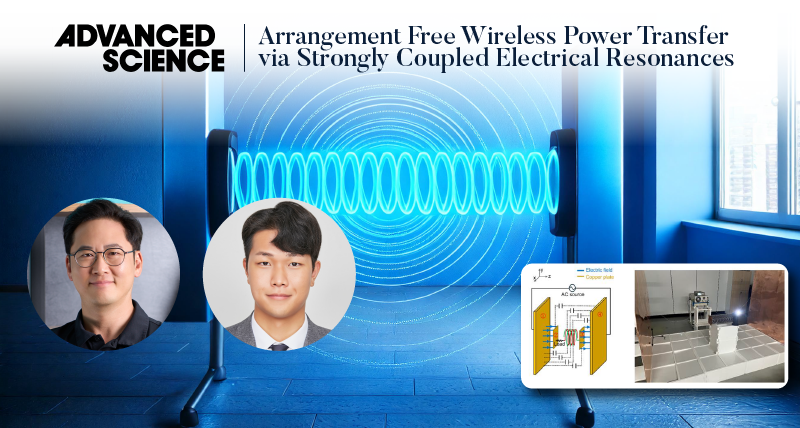A groundbreaking advancement in technology is paving the way for mobile phones and other electronic devices to recharge simply by being kept in a pocket. This innovative system enables wireless charging throughout three-dimensional (3D) spaces, encompassing walls, floors, and air.
On December 12, Professor Franklin Bien and his research team in the Department of Electrical Engineering at UNIST announced the creation of a revolutionary electric resonance-based wireless power transfer (ERWPT) system, marking a significant milestone in the field. This cutting-edge technology allows devices to charge virtually anywhere within a 3D environment, addressing the longstanding challenges associated with traditional magnetic resonance wireless power transfer (MRWPT) and offering a robust solution that enables efficient power transmission without the constraints of precise device positioning.
While MRWPT has served as a pioneering concept in wireless energy transfer, it has faced limitations due to the constraints of magnetic fields on receiver arrangement. This lack of monopole magnetic properties in MRWPT leads to a diminished sensitivity in power transfer efficiency (PTE) as receiver positioning changes, complicating the practical implementation of efficient wireless power solutions.
In contrast, ERWPT harnesses the monopole characteristic of electric charges, providing a significant advantage over magnetic field-based methods. The newly developed technology achieved an impressive nonradiative power transfer of up to 50 watts and a PTE of 46% over a distance of 2 meters, while maintaining consistent efficiency regardless of variations in receiver arrangement. For context, researchers at MIT achieved a transmission efficiency of 40% at the same distance using magnetic resonance methods in 2007.
 Figure 1. PTE measurement results at the ERWPT resonance frequency in the midrange (2m): Almost the same PTE in the lateral plane (xy-plane), demonstrating arrangement free characteristics, while the PTE and resonance frequency vary depending on the z-direction position.
Figure 1. PTE measurement results at the ERWPT resonance frequency in the midrange (2m): Almost the same PTE in the lateral plane (xy-plane), demonstrating arrangement free characteristics, while the PTE and resonance frequency vary depending on the z-direction position.
Professor Bien stated, “While MIT’s research indicated the feasibility of mid-range charging using a self-resonant method, our technology represents a genuine innovation that enables charging anywhere within a three-dimensional space.” He further elaborated that “this development will provide wireless charging solutions for logistics robots and automation systems in smart factories.”
A key element of this breakthrough is the enhanced physical structure of the transceiver, featuring an open bifilar coil configuration. This design optimizes electric resonance and facilitates effective power transfer by allowing devices to be freely positioned within the electric field without compromising efficiency. This configuration also enables wireless power transmission over greater distances.
Additionally, the ERWPT system allows for the simultaneous charging of multiple electronic devices, with experimental results confirming that power transmission maintains consistent efficiency even when multiple receivers are situated within a shared space.
The research team underscored the academic significance of their study, providing a new perspective on the nature of electromagnetic force that extends beyond purely technical achievements. Dr. Bonyoung Lee, the first author from UNIST, noted, “The ERWPT system introduces a novel energy transmission method utilizing electromagnetic force, showcasing a fresh approach to understanding electromagnetic phenomena.”
Co-authored by Director Hyungki Min of SB Solutions Inc., the findings of this groundbreaking research were published online in Advanced Science on November 21, 2024. The study was conducted with support from the Institute for Information & Communication Technology Planning & Evaluation (IITP) and the Ministry of Science and ICT (MSIT).
Journal Reference
Bonyoung Lee, Jungho Kim, Hyunkyeong Jo, et al., “Arrangement Free Wireless Power Transfer via Strongly Coupled Electrical Resonances,” Adv. Sci., (2024).













